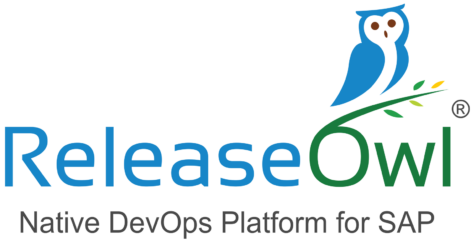SAP QA
Filter By
Browse By
- SAP Analytics and AI
- SAP Application Development and Integration
- All SAP Application Development and Integration
- SAP ABAP
- SAP ABAP Development Tools
- SAP ABAP Test Cockpit
- SAP API Management
- SAP BAPI
- SAP Basis
- SAP BRF
- SAP Business Application Studio
- SAP CMS
- SAP Design Studio
- SAP Development Tools
- SAP DevOps
- SAP EAI
- SAP EDI
- SAP Extension Suite
- SAP Fiori
- SAP Fiori Elements
- SAP Integration Suite
- SAP Low Code Application Development
- SAP Low Code Automation
- SAP Netweaver
- SAP Release Management
- SAP UI5
- SAP Web Application Server
- SAP Web IDE
- SAP Business Process Management
- SAP Center of Excellence
- SAP CIO
- SAP Customer Experience
- SAP Data and Data Management
- All SAP Data and Data Management
- SAP BW
- SAP BW/4HANA
- SAP Crystal Reports
- SAP Data Archiving
- SAP Data Center
- SAP Data Governance
- SAP Data Integration
- SAP Data Migration
- SAP Data Quality
- SAP Data Services
- SAP Data Strategy
- SAP Data Visualization
- SAP Data Warehouse Cloud
- SAP DMS
- SAP Document Control
- SAP EIM
- SAP ETL
- SAP ETL Tools
- SAP HANA
- SAP HANA Administration
- SAP HANA Deployment Infrastructure
- SAP HANA Studio
- SAP Master Data
- SAP Master Data Governance
- SAP MDM
- SAP Enterprise Architect
- SAP Enterprise Asset Management
- SAP ERP
- SAP Finance
- All SAP Finance
- SAP Accounting
- SAP AR AP
- SAP Asset Accounting
- SAP Billing Systems
- SAP BPC
- SAP BRIM
- SAP Cash Management
- SAP Central Finance
- SAP Controlling
- SAP COPA
- SAP Cost Center Accounting
- SAP Currency Risk
- SAP e-invoicing
- SAP FICO
- SAP Finance Automation
- SAP Advanced Financial Closing
- SAP Financial Consolidation
- SAP Financial Planning
- SAP FX Risk
- SAP General Ledger
- SAP Global Tax Management
- SAP Hyperion
- SAP Order to Cash
- SAP Payment Processing
- SAP Profitability Analysis
- SAP Rebate Management
- SAP S/4HANA Finance
- SAP SWIFT Compliance
- SAP Treasury Management
- SAP Universal Journal
- SAP Governance Risk and Compliance
- SAP Human Capital Management
- SAP Intelligent Technologies
- SAP Platform and Technology
- All SAP Platform and Technology
- SAP Business Technology Platform
- SAP Cloud Connector
- SAP Cloud Integration Platform
- SAP Cloud Migration
- SAP Cloud Platform
- SAP Cloud Providers
- SAP Cloud Strategy
- SAP Digital Signature
- SAP Container Platform
- SAP HANA Enterprise Cloud
- SAP Digital Asset Management
- SAP HEC
- SAP Digital Integration Hub
- SAP Hyperscalers
- SAP Infrastructure
- SAP Messaging
- SAP Smart Forms
- SAP Quality and Testing
- SAP Security
- SAP Spend Management
- SAP Supply Chain Management
- All SAP Supply Chain Management
- SAP APO
- SAP Asset Management
- SAP Business Network
- SAP Digital Manufacturing Cloud
- SAP Digital Twin
- SAP EWM
- SAP IBP
- SAP Inventory Management
- SAP Label Printing
- SAP Logistics
- SAP Manufacturing
- SAP Manufacturing Automation
- SAP MES
- SAP MII
- SAP MM
- SAP MRO
- SAP MRP
- SAP Order Management
- SAP Plant Maintenance
- SAP PLM
- SAP Production Planning
- SAP S&OP
- SAP SD
- SAP SPM
- SAP Supply Chain Planning
- SAP Track and Trace
- SAP Transportation Management
- SAP System Administration
What is Quality Assurance?
In business and technology, quality assurance (QA) is the process of identifying and maintaining standards related to product and software development.
A QA team is responsible for learning the product and various testing methods. In addition to testing, writing test plans, and documenting bug reports, a QA manager should also be organized, communicative, curious, empathetic, and have a positive attitude in order to succeed.
Testing and QA go hand in hand. Deepa Salem, Vice President and Research Director, SAPinsider, points out in an SAPinsider Market Insight that “testing and QA functions must be transformed with respect to their process and collaboration and provided with modern tools to keep up with the pace of change and the quality expectations.”
SAPinsider’s research demonstrates that modernization in testing and QA is needed.
“The traditional approach of throwing finished code over the wall to quality assurance and testing teams that maintain defects in a spreadsheet is no longer viable,” she says.
“Hence, companies are transforming their testing functions to meet the demand for high software quality, performance, security, and user satisfaction rapidly.”
What is Quality Assurance?
In business and technology, quality assurance (QA) is the process of identifying and maintaining standards related to product and software development.
A QA team is responsible for learning the product and various testing methods. In addition to testing, writing test plans, and documenting bug reports, a QA manager should also be organized, communicative, curious, empathetic, and have a positive attitude in order to succeed.
Testing and QA go hand in hand. Deepa Salem, Vice President and Research Director, SAPinsider, points out in an SAPinsider Market Insight that “testing and QA functions must be transformed with respect to their process and collaboration and provided with modern tools to keep up with the pace of change and the quality expectations.”
SAPinsider’s research demonstrates that modernization in testing and QA is needed.
“The traditional approach of throwing finished code over the wall to quality assurance and testing teams that maintain defects in a spreadsheet is no longer viable,” she says.
“Hence, companies are transforming their testing functions to meet the demand for high software quality, performance, security, and user satisfaction rapidly.”
Quality Assurance, SAP Cloud Integration, and SAP S/4HANA
In today’s SAP world QA is most readily associated with SAP Cloud Integration and SAP S/4HANA. According to SAP, quality assurance is integral to the SAP Cloud Integration development process.
When it comes to deploying SAP S/4HANA, QA and testing is just as important as architecture and development.
Cognizant provides a QA framework for SAP S/4HANA deployment that includes automated testing. The testing tool allows for organizations to run a full regression test in a few hours, writes Robert Holland, Vice President and Research Director, SAPinsider.
Automated testing can help organizations ensure that its systems stay at the level of quality that is established during the initial week of implementation. Holland recommends that SAPinsiders prioritize quality assurance and testing for both deployment and maintaining system quality over time. “Automated testing can not only accelerate your initial deployment by reducing the manual testing effort, but it will also improve the overall quality of your SAP S/4HANA deployment and provide a platform for maintaining that quality through future upgrades and integrations,” he says.
“Those who are using these tools are seeing the benefits that they bring, but all SAPinsiders should focus on quality assurance and testing—and the tools and technologies that can accelerate this—as part of their planning for SAP S/4HANA deployment.”
10921 results
-

 Premium
Premium
Extending and Modifying SAP Standard with Business Add-Ins and the New Modification Assistant
Reading time: 1 mins
Up until now, Customer Exits and Modifications were the only development techniques available for extending and modifying standard SAP applications. Release 4 introduces two new techniques – Business Add-Ins and the Modification Assistant. Business Add-Ins are predefined exit points in a source that allow developers to either insert their own logic during implementation or simply...…
-

 Premium
Premium
Real-Time, Outbound Interfaces to Non-R/3 Systems Made Simple with Change Pointers, Message Control, and Workflow
Reading time: 1 mins
Developers often struggle with custom ABAP/4 code or database logging to devise ways to track changes to data and then to trigger output of that changed data across outbound interfaces to non-R/3 systems. The onus of creating a way to track changes as they occur rests squarely on the shoulders of these developers, but it...…
-

 Premium
Premium
Size Does Matter – Strategies for Successful SAP R/3 Capacity Planning
Reading time: 2 mins
Capacity planning is not a trivial task. Choose your hardware vendor and equipment carefully, and upgrades will pose few problems. Choose the wrong vendor-model combination, and you will be forced to make extensive changes to your hardware and operating system that will entail extensive planning and testing, and could ultimately require all new equipment. So...…
-
-

 Premium
Premium
An Introduction to SAP’s New and Improved Frontend Printing
Reading time: 1 mins
Dr. Stefan Fuchs describes a new spool access method that allows the transfer of print data from the application server to the current location of the SAPGUI. From there the data is sent to the local spooler on the user’s particular frontend. That new spool access method — method “F” — is what SAP calls...…
-

 Premium
Premium
Achieving a More Manageable and Reliable R/3 Spool Server Landscape Using Release 4 Output Classifications, Logical Servers, and Alternate Servers
Reading time: 2 mins
Three new output features give rise to a more manageable, more reliable R/3 spool server environment — classifications, logical servers, and alternate servers. With Release 4, classifications of output devices and spool servers (along the lines of production, high-volume, desktop, and test printing) are now made possible within R/3 itself. This helps you ensure that...…
-

 Premium
Premium
ABAP Programming – An Integrated Overview
Reading time: 2 mins
With Release 4.0 and the debut of ABAP Objects, SAP is replacing the classical distinction between reporting and transaction programming with an integrated view, recognizing the simple fact that all application logic is programmed in ABAP and that the application can communicate with the user via screens and with the database via a common interface....…
-

 Premium
Premium
A Beginner’s Guide to Accessing BAPIs with the SAP DCOM Connector
Reading time: 2 mins
This article will introduce you to the basic design principles behind SAP DCOM Connector (SDC), show you how to build BAPI-enabled applications with SDC in Visual Basic, and discuss some advanced concepts for SDC-based applications. In order to keep things simple, we will assume that our applications are built without MTS. So I will not...…
-
-

 Premium
Premium
Extending SAP Business Workflow with Web Forms
Reading time: 1 mins
Web forms are the means by which developers can create applications that enable users to start workflows and execute work items from the comfort of a Web browser. A Web form is a simple, intuitive interface, which is made up of a relatively short list of fields and a “Submit” button. This interface obviates the...…
-

 Premium
Premium
Lessons in Logon Load Balancing
Reading time: 1 mins
In large SAP R/3 environments that require multiple application instances, you can achieve intelligent, automated distribution of workload across multiple application instances, with minimal impact to end users, through logon groups. This article explains how logon groups work and how to use them to establish a logon load balancing strategy that can improve system performance,...…
-

 Premium
Premium
Leveraging the R/3 Warehouse Management Structure with the MM-MOB and WM-LSR Interfaces
Reading time: 2 mins
/Project ManagementIntegrating the R/3 Warehouse Management (WM) module with mobile data entry devices and external warehouse management systems is made possible by two interfaces — Mobile Data Entry (MM-MOB), which enables mobile entry and transfer of data to and from SAP, and Warehouse Control Unit (WM-LSR), which enables the sending and receiving of information between...…
Featured Insiders
-

Marc Auro
Managing Director, CUVIV UK
-

Joerg Boeke
SAP BW / HANA Solution Architect, Manging PArtner BIAnalyst Gmbh & Co. KG
-

Craig L. Brown, Sr.
Chief Transformation Architect, Xceleon, LLC
Become a Member
Unlimited access to thousands of resources for SAP-specific expertise that can only be found here.
Become a Partner
Access exclusive SAP insights, expert marketing strategies, and high-value services including research reports, webinars, and buyers' guides, all designed to boost your campaign ROI by up to 50% within the SAP ecosystem.
Upcoming Events
Related Vendors
Your request has been successfully sent


